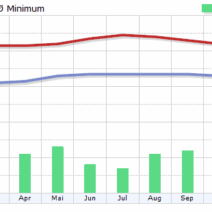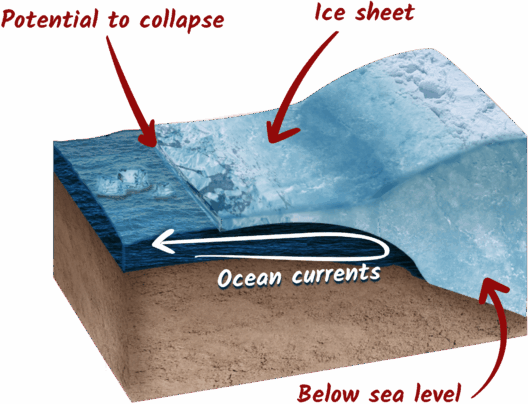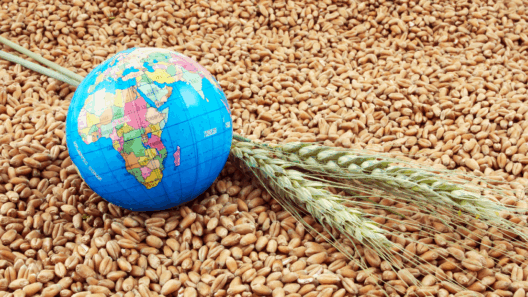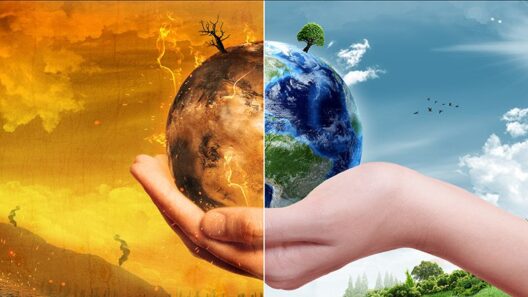Global warming is not a distant threat; it is an omnipresent challenge that is reshaping the very fabric of ecosystems worldwide. As temperatures rise due to greenhouse gas emissions, the delicate balance of our natural world is being disrupted, leading to profound changes in both flora and fauna. This phenomenon is not merely a narrative but a reality that demands immediate attention. Each ecosystem, whether terrestrial or aquatic, is experiencing shifts that have far-reaching implications for biodiversity, species interactions, and overall ecological health.
At the crux of this transformation is the impact of rising temperatures on animal habitats. Many species depend on specific temperature ranges for survival. For instance, polar bears and other Arctic inhabitants rely on sea ice for hunting seals, their primary food source. As the ice shrinks, these animals are compelled to venture further for sustenance, exposing them to greater risks, including starvation and increased competition. Additionally, species such as the emperor penguin, which breed on stable sea ice, face existential threats as their reproductive success diminishes alongside diminishing ice habitats.
In terrestrial environments, the migration patterns of animals are evolving due to shifting climates. Many species are moving toward higher altitudes or latitudes in search of cooler temperatures. This phenomenon is particularly evident in bird migrations; numerous studies have documented changes in migratory timings, with species arriving at their breeding grounds earlier than in previous decades. Such alterations can disrupt intricate ecological relationships, leading to mismatches in the availability of food sources and breeding timings. As an example, certain insects might emerge too early in response to warmer climates, yet their avian predators might not adjust their migratory patterns accordingly, resulting in food shortages for the young birds.
Flora are not unaffected by the climactic upheaval. As temperatures rise, many plant species are also shifting their ranges. Alpine and arctic plants, for instance, are retreating to higher elevations or latitudes, forcing them to compete with other flora that previously thrived in those areas. This can lead to dramatic shifts in plant community composition, with cascading effects for the animal species that depend on certain plants for food and shelter. Moreover, with altered ecosystems, invasive species are finding new opportunities to thrive, often at the expense of native vegetation. These non-native species can outcompete local flora, diminishing biodiversity and altering ecosystem services.
Overall, the interactions between plants and animals are becoming increasingly complex as the climate warms. Phenological changes—the timing of biological events—are creating new challenges. For instance, the flowering of plants may occur earlier in the spring, while the pollinators critical for their reproduction may not emerge on the same schedule. This misalignment can lead to reduced seed production and ultimately affect plant population dynamics. Ecosystems are built upon a delicate web of interdependence, and any disruption can reverberate throughout the system, influencing species survival and ecosystem stability.
Coral reefs are among the most vulnerable ecosystems to climate change. Rising sea temperatures lead to coral bleaching, a phenomenon whereby corals expel the symbiotic algae that provide them with nutrients and color. This stressor not only decimates coral populations but also disrupts the myriad of species that depend on these vibrant ecosystems. Fish, invertebrates, and countless marine organisms rely on healthy coral reefs for shelter and sustenance. The loss of these habitats leads to diminished fish populations, threatening the livelihoods of communities that rely on fishing and tourism industries.
Moreover, the phenomenon of ocean acidification, a direct result of increased carbon dioxide levels, poses an additional threat to marine life. As oceans absorb excess CO2, their pH levels decrease, leading to harmful consequences for shellfish and other calcifying organisms. The intricacies of marine ecosystems cannot be overstated, as each lost species can trigger a domino effect, destabilizing entire communities.
The repercussions of global warming extend beyond individual species; they influence entire habitats and ecosystems. The classification of “ecosystem services” becomes primary in this discourse. These services encompass the benefits that humans derive from nature, including clean air and water, pollination of crops, and climate regulation. As ecosystems shift and species become extinct or migrate, the capacity of these systems to provide essential services is compromised, posing a threat not only to wildlife but to human populations as well.
In anticipation of the ongoing effects of climate change, adaptive management strategies are imperative to mitigate and manage changes in ecosystems. Conservation efforts focusing on habitat preservation and restoration, alongside initiatives aimed at reducing carbon footprints, are vital. By establishing protected areas that account for potential shifts in species’ ranges, ecosystems can be safeguarded against unsustainable exploitation.
Public awareness and education are paramount in addressing the looming crisis of global warming. Engaging communities in conservation efforts can foster a deeper connection to the natural world while emphasizing the importance of stewardship practices. As ecosystems undergo transformation, understanding the underlying processes and impacts of climate change is crucial for cultivating a more resilient environment for future generations.
The uncertainty surrounding the pace and scope of climate-induced changes only heightens the urgency for comprehensive action. By recognizing that every species plays a role in the ecological tapestry, a collective responsibility emerges. It is essential to advocate for policies that emphasize sustainability and environmental protection as we navigate the unpredictable future shaped by global warming.








